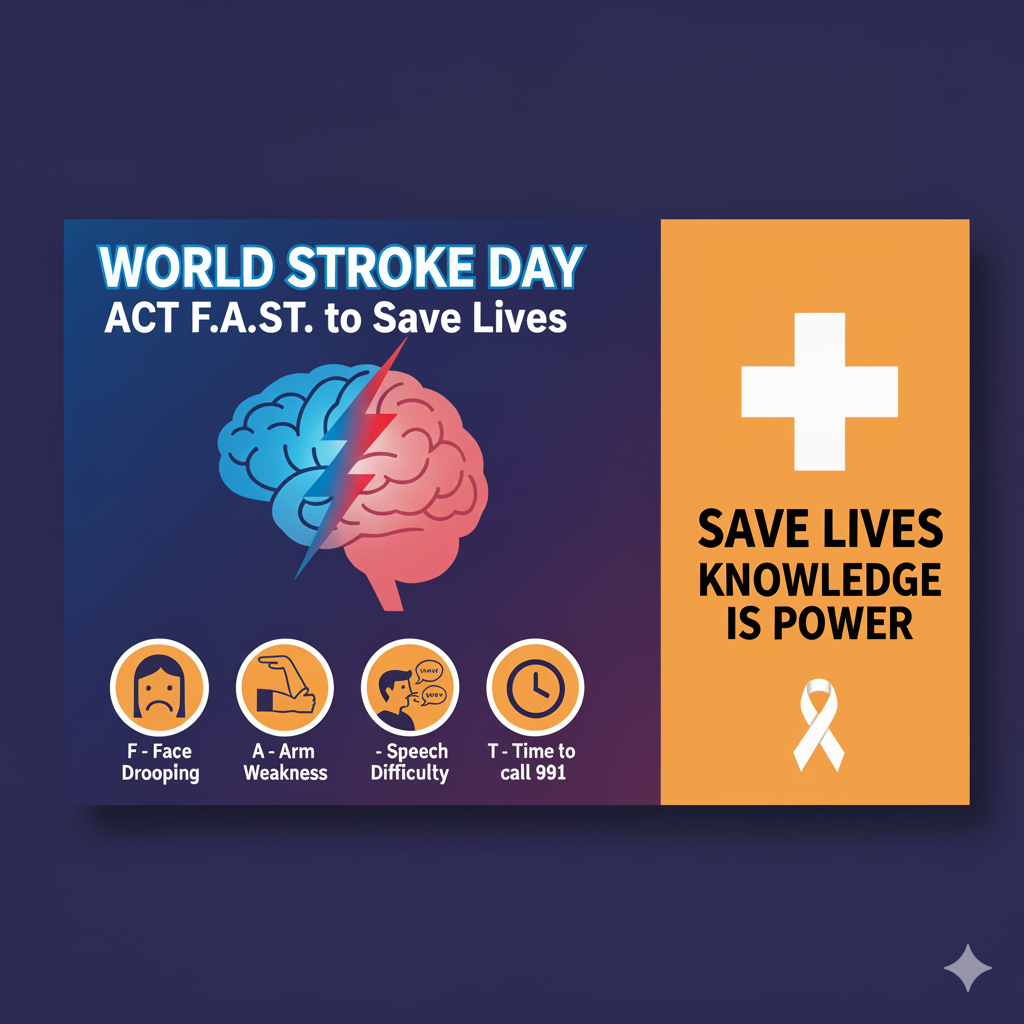Today, October 29th, marks World Stroke Day, an annual event dedicated to raising global awareness about stroke, its prevention, and the critical importance of timely intervention. This day serves as a crucial reminder that stroke can affect anyone, at any age, and that understanding its signs and symptoms can be the difference between life and death, or long-term disability.
Stroke remains a significant public health concern worldwide. It is the second leading cause of death and the third leading cause of death and disability combined globally. While stroke risk increases with age, it's important to remember that strokes can occur at any point in life. The American Heart Association estimates that approximately 80% of strokes are preventable.
Recognizing the Signs: Act F.A.S.T.
One of the most vital aspects of stroke awareness is knowing how to recognize the signs quickly. The acronym F.A.S.T. is a simple yet powerful tool to help identify a stroke and prompt immediate medical attention:
- Face drooping: Does one side of the face droop or is it numb? Ask the person to smile. Is the smile uneven?
- Arm weakness: Is one arm weak or numb? Ask the person to raise both arms. Does one arm drift downward?
- Speech difficulty: Is speech slurred? Is the person unable to speak or hard to understand? Ask the person to repeat a simple sentence.
- Time to call emergency services: If someone shows any of these symptoms, even if the symptoms go away, call local emergency number immediately. Time is critical in stroke treatment.
Prevention is Key
While immediate action is crucial during a stroke, prevention is undeniably better than cure. Many strokes are preventable through lifestyle modifications and managing underlying health conditions. Here are some key prevention strategies:
- Manage Blood Pressure: High blood pressure is a major risk factor for stroke. Regularly monitoring and controlling blood pressure through diet, exercise, and medication if necessary, is vital.
- Healthy Diet: A balanced diet rich in fruits, vegetables, and whole grains, while low in processed foods, unhealthy fats, sugars, and sodium, contributes significantly to overall cardiovascular health and stroke prevention.
- Regular Physical Activity: Engaging in regular exercise helps maintain a healthy weight, lowers blood pressure, and improves cholesterol levels, all of which reduce stroke risk.
- Quit Smoking: Smoking significantly increases the risk of stroke. Quitting smoking is one of the most impactful steps you can take for stroke prevention.
- Control Diabetes: If you have diabetes, managing blood sugar levels is essential to prevent stroke and other complications.
- Limit Alcohol Consumption: Excessive alcohol intake can raise blood pressure and contribute to stroke risk.
Supporting Stroke Survivors and Caregivers
World Stroke Day also highlights the long-term impact of stroke on survivors and their families. Post-stroke recovery can be a challenging journey, often involving physical, cognitive, and emotional changes. Providing support for rehabilitation, access to care, and resources for caregivers is crucial for improving the quality of life for those affected.
Let's use World Stroke Day to educate ourselves and our communities. By understanding the signs, embracing preventive measures, and supporting those impacted by stroke, we can all contribute to a world where fewer lives are devastated by this medical emergency.


